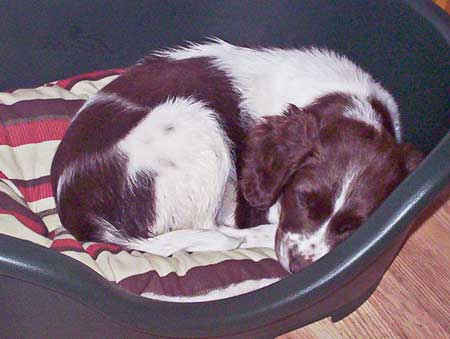Every dog owner knows the feeling of being pulled along by their pooch as they excitedly lead the way on a walk. But for those with Spring Spaniels, this experience may be all too familiar. Gundogs are bred to have a strong sense of smell and a lot of energy, which can make them difficult to control on a lead. However, there are a few things that you can do to learn how to stop a Springer Spaniel pulling on a lead.
First, you need to make sure that they are getting enough exercise. A tired dog is less likely to pull on a lead. Secondly, you should use a harness rather than a collar, as this will distribute the force more evenly and make it easier for you to control your dog. Finally, be consistent with your commands and rewards, and eventually, your Springer Spaniel will learn that pulling on a leash does not get them what they want. With a little patience and perseverance, you can have your Springer Spaniel walking calmly by your side in no time.
Why do Springer Spaniels pull on a lead?

Springer Spaniels were originally bred as hunting dogs, and their natural instinct is to follow a scent. When they are on a lead, they may smell something interesting and want to follow it. In addition, Spaniels are bred to be active and cheerful, and they may become restless if they are not given enough exercise. If they are constantly being restrained, they may start to pull on the leash in an effort to get away. Finally, some Spaniels simply enjoy the feeling of moving forwards and may pull on the lead even if there is nothing interesting to smell. Whatever the reason, it is important to train your Spaniel not to pull on the leash, as it can be harmful to their health.
As any dog owner knows, taking your pet for a walk should be an enjoyable experience for both of you. However, if your dog is constantly pulling on the leash, it can quickly become a frustrating ordeal. If you’re tired of being dragged around by your Springer, follow these simple steps and you’ll soon be enjoying peaceful walks together.
How to stop your dog pulling on the lead step-by-step
The first step is to invest in a good quality harness. A harness will distribute the pressure more evenly across your dog’s body, making it more comfortable for them to walk without pulling. Second, make sure that you are using an appropriate lead. A long lead will give your Springer more freedom to explore, while a shorter lead will help you to keep them close by your side. Dogs are quick learners, but they need time to adjust to new rules and routines. With a little patience and persistence, you’ll Soon have your Springer walking calmly by your side.
What are the best harnesses for dogs pulling on a leash?
Anyone who has ever taken their dog for a walk knows that sometimes, they can be a little too enthusiastic about it. Dogs have a lot of energy, and they often want to go faster than their human counterparts. This can result in your dog pulling on the leash, which can be both dangerous and frustrating. The good news is that there are a number of harnesses available that can help to control your dog without causing them discomfort. These harnesses evenly distribute the pressure from the leash, making it more comfortable for your dog to walk at your side. In addition, many of these harnesses come with reflective strips or built-in lights, which can help to keep you both safe on evening walks. With so many options available, there is no excuse not to find the perfect harness for your dog.
The best no-pull harness for Springers is arguably the 3 Peaks medium dog harness. The Halti no pull harness. There are other options like the Ruffwear Adventure harness which is so comfortable it is touted to be wearable all day (although as a vet, I do not recommend this). There are other brands such as the Julius K9 harness and the Rabbitgoo No Pull Dog harness.
How to stop leash pulling in 5 minutes
Many dogs such as Spingers tend to pull on their leash, making walks difficult and frustrating. The good news is that there are a few simple techniques that can help to stop leash pulling in just a few minutes.
Step 1: First, try to keep your dog’s attention focused on you by using treats or toys. If your dog starts to pull ahead, simply stop walking and wait for him or her to come back to your side.
Step 2: Once your dog is back by your side, continue walking and praise him or her for good behavior. You may also want to try using a harness instead of a collar, as this can help to distribute the force of the pull more evenly.
With a little patience and practice, you’ll be able to enjoy leash-walking with your dog in no time.